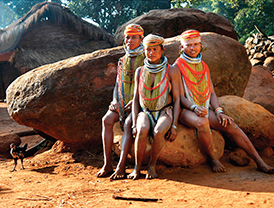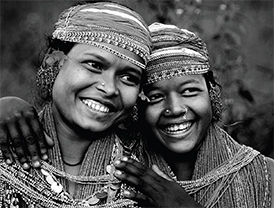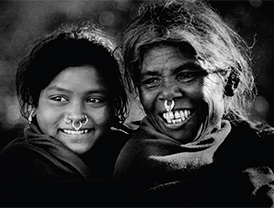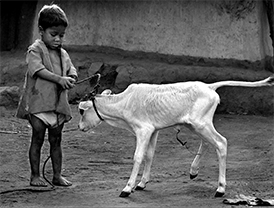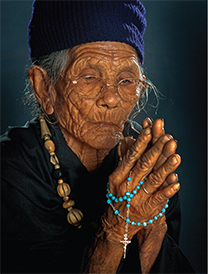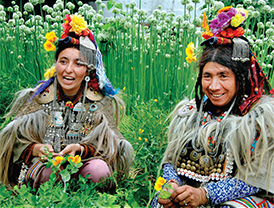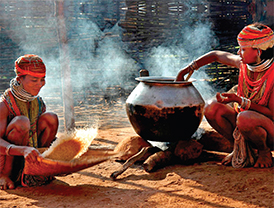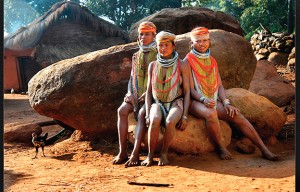 Tamma Srinivasa Reddy’s amateurish stint in photography metamorphosed into a serious profession. Today he chairs the photojournalism division of IIPC and conducts national and international photo salons, workshops and classes on photography. He has won prestigious competitions at regional, national and international levels.
Tamma Srinivasa Reddy’s amateurish stint in photography metamorphosed into a serious profession. Today he chairs the photojournalism division of IIPC and conducts national and international photo salons, workshops and classes on photography. He has won prestigious competitions at regional, national and international levels.
As told to Tanika Godbole
Our Paradise Bonda Sisters
I grew up in a beautiful village in the hills— Undavalli, Andhra Pradesh. In the year 1984, the chief photographer of The Indian Express, Mr. Srinivasan visited Undavalli to photograph the famous caves. I watched him in fascination. The next day, I saw the photographs in the newspaper, along with the photographer’s name. I decided this was what I wanted to do with my future.
Once I was young We are friends
The next year, I went to The Indian Express office and a month of rigorous training followed. Mr. Srinivasan guided me through the intricacies of shooting, dark room techniques and all the finer details that go into photography. During Dussehra festival, Mr. Srinivasan said, “I’ll give you three frames…….see if you can take pictures that make a difference.” A dance performance was on, at the Kanakadurga temple. I went. I recalled his lessons, shot the three frames, developed the roll and showed him the results. He pointed out shortcomings in two of the frames, then exclaimed over the third and the next thing I knew, he had published this. That’s how it all began. In 1988, Vijayawada was a city in flames, after the killing of Vangaveeti Mohan Ranga. Going around the ravaged city, I caught on camera the horrors that ensued. These photographs were carried by the local newspapers and National periodicals. In 1989, when Rajiv Gandhi visited Vijayawada, I was able to capture on film, photographs of the glamorous Prime Minister of India.
Prayer Time To Market
Covering these political events which had far reaching impact on people and shaped the subsequent course of the country’s history, it was but natural for me to choose photojournalism as I have travelled across India; and I cherish my interaction with Bonda tribals. I have been drawn to the simple, rustic life of these people. I am also charmed by the Banjaras. I think they are the most beautiful people. Initially, I faced a lot of resistance. It took them a long time to accept me and my camera. For a photographer who loves and worships his art, the value of a portrait does not depend on the commercial attention it attracts but rather on the creative art of depiction of the truth.
Dha Tribals Preparation
Finally, the experience should remain an indelible memory for the subject, the photographer and the viewer. Get to know the model. Study the features and the expressions and decide on the angle for composition. Considerations of the lighting and the colour of the subject’s apparel are vital for the composition of the portrait. Once this is done, you should capture that unique feature in such a way that it elicits an instantaneous `WOW!’ from the viewer. You know that you as a photographer have done justice to the subject when the portrait continues to grab the attention of the viewer repeatedly, with the same freshness as the first time. Patience and a good camera are essential for creating great images.
Photography is a wonderful experience. It is soul stirring and fun. Photo

